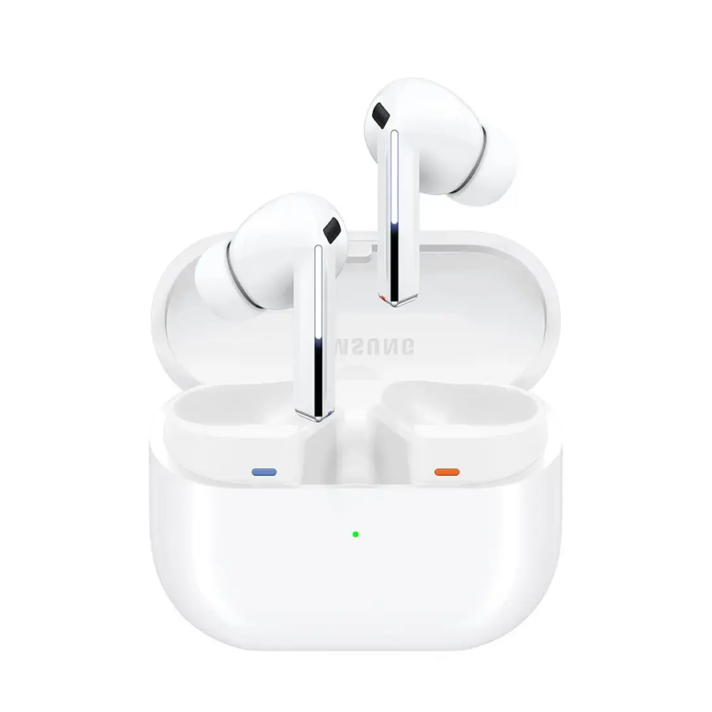Description
Earphones with Lightning Connector are wired earphones designed for Apple devices that lack a traditional 3.5mm headphone jack. These earphones connect via the Lightning port, which is the standard charging and data transfer port found on most modern iPhones and some iPads. Here’s a detailed overview:
Design and Build
- EarPods Design: Most Lightning earphones, particularly Apple’s own EarPods with Lightning Connector, have a simple, classic design similar to the standard Apple EarPods that come with older iPhones. The design features a white, minimalist aesthetic with a hard plastic body that fits directly in the ear, without silicone tips.
- Wired Design: Since these earphones are wired, they offer a direct connection to the device, eliminating the need for Bluetooth pairing or charging.
Sound Quality
- Balanced Sound: Earphones with a Lightning connector, such as the Apple EarPods, are known for delivering balanced sound quality. They are not designed for audiophiles, but they provide clear mids, decent bass, and crisp highs, making them suitable for casual listening, podcasts, and phone calls.
- No Loss of Audio Quality: Lightning earphones transmit digital audio, which provides clear and high-quality sound compared to analog connections like the 3.5mm jack. This allows for more precise audio transmission, and for some devices, the digital connection can result in better sound clarity.
Microphone and Controls
- Inline Remote and Microphone: Most Lightning earphones come with an inline remote control that features three buttons: volume up, volume down, and a central button that handles play/pause, track skipping, and call management.
- Microphone: The inline mic offers clear voice pickup for phone calls, Siri commands, and other voice-based interactions, making it convenient for hands-free communication.
Compatibility
- iPhone and iPad: Lightning earphones are primarily designed for use with iPhones and iPads that have Lightning ports. They are compatible with iPhones ranging from the iPhone 5 to more recent models like the iPhone 14 series.
- iPod Touch: These earphones also work with the last few generations of the iPod Touch, which feature a Lightning connector.
- Mac: While they are not directly compatible with MacBooks or other devices that have USB-C or 3.5mm ports, you can use a Lightning-to-USB-C or a Lightning-to-3.5mm adapter to make them work with other devices.
- No Compatibility with Android Devices: Since these earphones use Apple’s proprietary Lightning port, they are not compatible with Android devices or other non-Apple products unless an adapter is used.
Advantages
- No Charging Needed: Unlike wireless earbuds like AirPods, these earphones don’t need to be charged, providing a plug-and-play experience.
- Latency-Free: With a wired connection, there is no audio latency, which is especially beneficial for gaming, video editing, or watching movies where audio syncing is crucial.
- Affordable: Lightning earphones, especially Apple’s EarPods, are relatively affordable compared to wireless alternatives.
Drawbacks
- Limited to Apple Devices: Since these earphones use the Lightning connector, they are largely limited to Apple devices. Users with non-Apple products will need to use an adapter or choose a different headphone option.
- No Noise Cancellation: Standard Lightning earphones like Apple’s EarPods do not offer active noise cancellation (ANC) or advanced audio features like spatial audio, which are found in more premium wireless options like AirPods Pro.
- Durability: Wired earphones, especially those made of plastic, tend to wear out more quickly, especially around the connector or the area where the wires meet the earbuds.
Alternatives
- Lightning-to-3.5mm Adapter: If you prefer using regular headphones with a 3.5mm jack, Apple offers a Lightning-to-3.5mm adapter, which allows you to use traditional wired headphones with your iPhone or iPad.
- Wireless Earphones: For users who don’t want to deal with wires, Apple offers the AirPods and AirPods Pro, which are wireless alternatives with added features like Active Noise Cancellation, Transparency Mode, and spatial audio.









Reviews
There are no reviews yet.